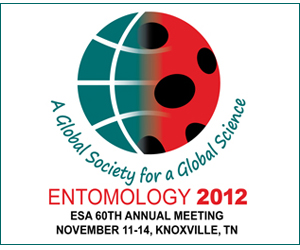North Central Branch Annual Meeting Online Program
Effects of cover crop and extended rotation on insect taxa and plant disease pressure
Monday, June 4, 2012: 9:27 AM
Regents F (Embassy Suites)
Corn (Zea mays L.) is an economically important crop with demands increasing both domestically and globally. How long-term weather variability will affect corn-based agriculture remains largely uncertain. Alternative production strategies, such as the use of cover crops and extended rotations, may help to ensure continued productivity while mitigating potential effects of weather variability. Managing pest injury is another important component of corn-based cropping systems. Pests of agriculture, including arthropods and plant diseases, have the potential to significantly reduce crop yields. Integrative Pest Management (IPM) combines multiple management strategies, such as chemical pesticides and crop rotations, with knowledge of pest ecology to manage pest pressure in an economically and environmentally viable way. We measured how two production strategies, rye cover crop planted within a corn-soybean (Glycine max L.) rotation and extended rotations including corn-soybean-wheat (Triticum aestivum L.), affected key pest taxa at multiple locations throughout the Midwest. Insect and arthropod taxa were measured using an array of trapping methods, including black light trapping, sweep netting, yellow sticky traps, and pit fall traps. We also measured the abundance of soybean aphid (Aphis glycines Matsumura) with speed scouting, the occurrence of late season foliar diseases, and ground cover. Data collected from these locations was used to test the hypothesis that pest abundance and diversity should be diminished in the presence of these alternative production strategies compared to continuous production of corn and soybean.


